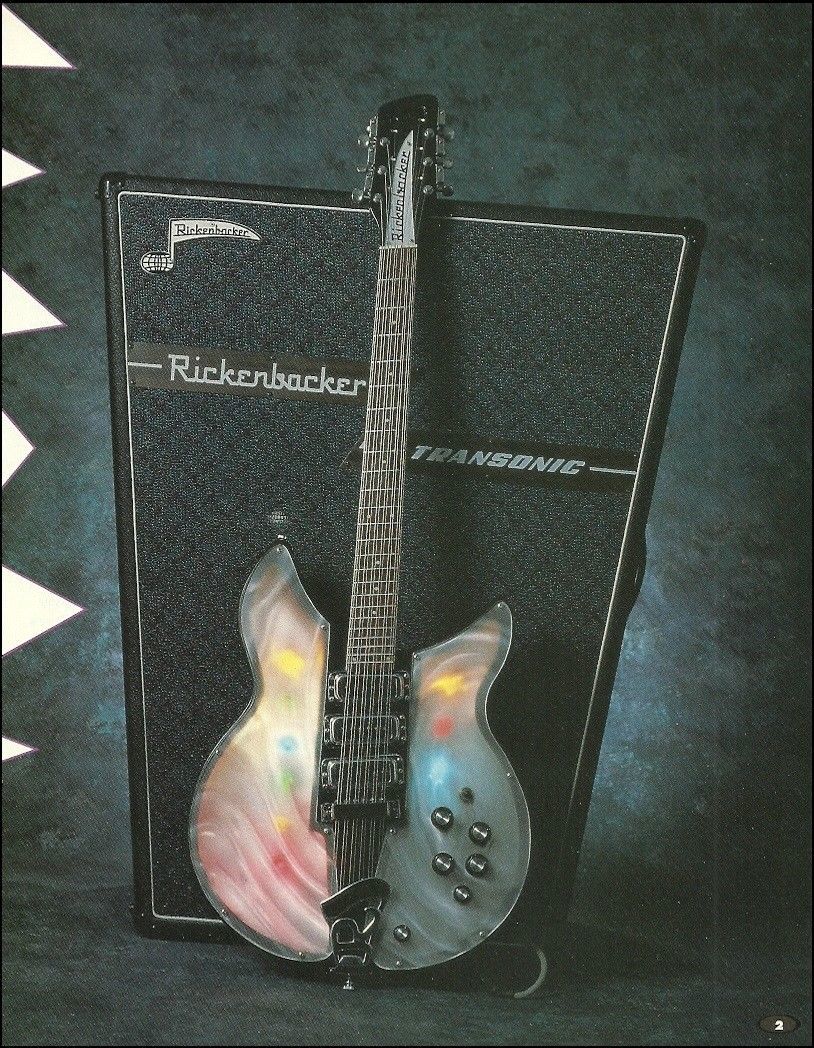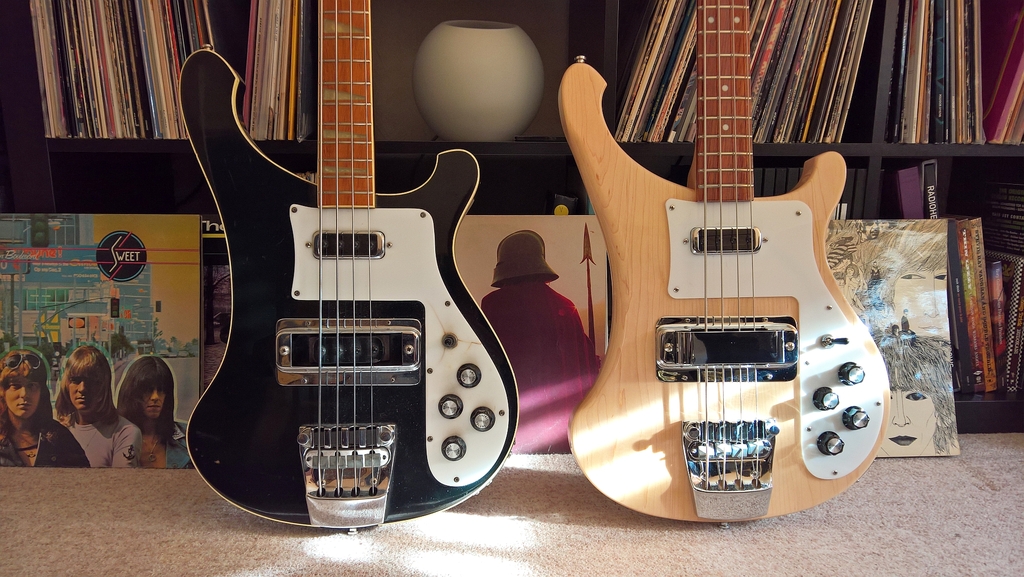David Watts a écrit :
Oil Finish Maintenance
Beyond routine cleaning, the best way to maintain a hand rubbed oil finish (as seen on Rickenbacker Models 650D, 650S, and some older models), is with Tung oil and a 3M Scotch Brite™ Ultra Fine Hand Pad (#7448.) Using small amounts of oil at a time, wipe down the instrument until there is a relatively uniform coating on the surface of the guitar.
Going with the wood grain, use the Scotch-Brite™ pad to lightly sand the surface until it begins to take on its original silky smooth feel.
Before setting the instrument aside to dry, use a clean, lint free cloth to wipe down any excess oil or grit.
Allow 8 – 12 hours for proper drying.
This procedure can also be performed using ultra fine, light or gray colored sandpaper. A minimum grade of 1200 should be used to avoid damaging the surface of the wood. It is also important to avoid black sandpaper, as the residue is likely to stain the instrument as the oil sets in.
Use of steel wool is not recommended as the ferrous residue can cling to pickups. Particles of this residue can also become suspended in the finish and rust over time.
http://www.rickenbacker.com/pd(...)l.pdf
From Paul Wilczynski (jingle_jangle) in the RRF Forum on Oil Finished RICS
I've written on this topic several times. There was a long thread on it about a year or so ago, in which we discussed all sorts of natural and synthetic oils as related to the maintenance of these finishes.
I use Watco's Danish Oil finish to keep oiled finishes looking great. I own a beautiful one-off Greene and Greene "umbrella stand" long case clock in a fumed golden oak finish. Watco's is all I use to keep it looking its best. I purchase the Watco's in pint tins, and use the Natural (colorless) kind. It has tung oil, linseed, a bit of spirits, and natural waxes (I believe) dissolved in small quantities, or maybe the wax is a component of one of the oils.
Watco's is wiped on. It contains no solvents. (Formby's has butyl cellusolve and alcohol to liquify the old finish.)Wipe the Watco's on nice and wet, and let it penetrate for five minutes or so, then using a dry clean cotton cloth, buff the excess off and keep buffing until the waxes rise and the surface feels hard, slick and non-sticky. Do not let the stuff dry--it will remain sticky and attract dust and dirt.
When I do a walnut guitar, I disassemble the body and remove the tuners, too. Then I go over the guitar a couple of times in a row, and reassemble after the final buffing.
Rick's manual mentions a regimen (I'm going from memory) using tung oil and very fine steel wool, I think. My own opinion is: if they recommend it, it must be good. My own way comes from years of working with handmade hardwood stereo component cases, which I used to build back in the '60s and '70s until black became the style.
You can also use a hard paste wax like Johnson's floor wax or Butcher's Boston Wax, applied with fine steel wool and buffed out. Don't let this dry, either, especially Johnson's. It is a bear to remove once dry.
Whenever using these "rub in" products, go WITH the grain of the wood.
So, pick your method and you'll keep your walnut guitar looking good and resisting moisture for a long time.
NEVER use Pledge.
http://www.rickresource.com/fo(...)13799
C'est cool mais ces produits sont introuvables en France.
Pour la touche en érable je dois nettoyer ou nourrir avec quoi du coup ? La même chose ?








